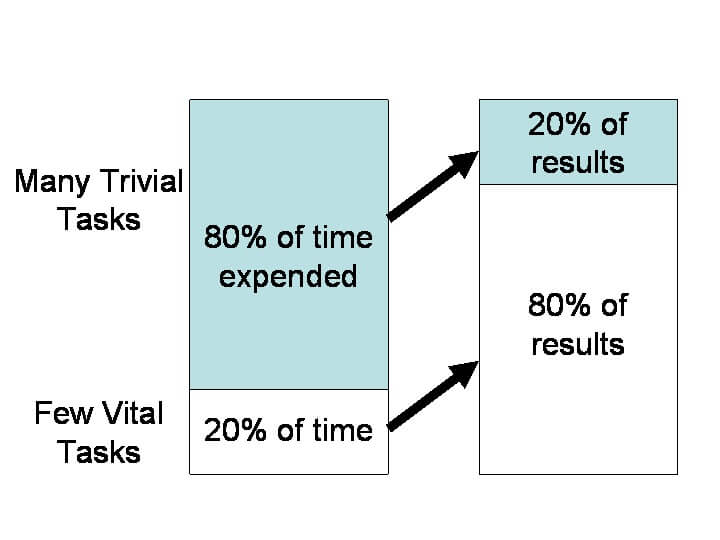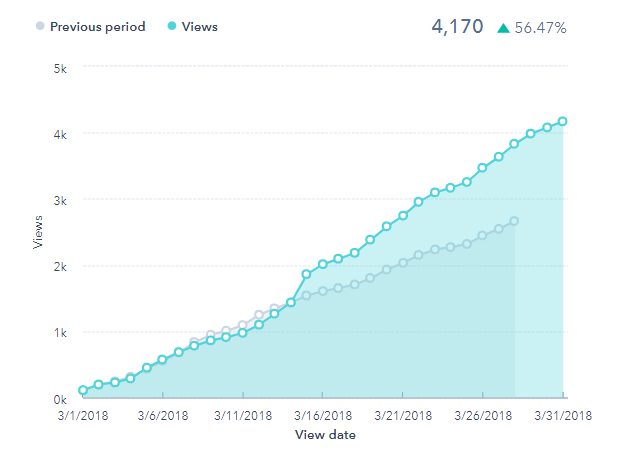Understanding Content Marketing: How the 80/20 Rule Can Get You More from Your Content
Content marketing is a pretty widely interpreted and applied marketing term.
The Content Marketing Institute defines content marketing as a “strategic marketing approach focused on creating and distributing valuable, relevant, and consistent content to attract and retain a clearly defined audience – and, ultimately, to drive profitable customer action.”
Due to the broad definition of content marketing, it’s not uncommon to see many campaigns fail.
I’m here to tell you that understanding content marketing and the results that it can drive can be as simple as a ratio. Specifically, an 80:20 ratio.
The Pareto Principle & How It’s Related to Content Marketing
Back in 1896, an Italian Economist named Vilfredo Pareto first noted that 80% of Italy’s land was owned by 20% of Italy’s population. After several follow-up studies, he then found a similar ratio in other European countries. People have been finding this same ratio in places that Mr. Pareto would’ve never thought.
This principle can be applied to computer science (20% of most-reported bugs cause 80% of crashes), sales and business (20% of your customers account for 80% of your profit), and even criminal investigation (20% of crimes are committed by 80% of criminals).

Regardless of the action performed, the 80/20 rule can be boiled down to 80% of the results come from 20% of the activity.
There are tons of marketing blogs out there that are misusing the 80/20 rule. This isn’t one of them.
This isn’t an article that will tell you some secret, magical recipe for how to distribute the sharing of your social media content, or for how many blogs you need to put out in a year.
This article is some ammunition for content marketers to understand the results they should expect from their efforts.
The Pareto Principle is related to content marketing because as a whole, you can expect nearly 80% results from content marketing to come from nearly 20% of your published, on-site content.
Keep in mind that these metrics aren’t universally applicable to all industries, businesses, or content types. Rather, it’s a conceptual benchmark that nearly all businesses should try to emulate.
I’ve worked with some clients that deal with both sides of the content marketing spectrum. Some have a strong library of conversion-focused blog posts that generate leads effectively, and others have few blogs and even fewer conversion points.
That means all content created by content marketers isn’t equal. Some blog posts are destined to instantly receive good traffic, while others will live on the 8th, 9th, or even, 10th page of search results.
While we can’t completely control which pieces of content will be the most successful, we can base our content creation on careful analysis based on where the current content library is succeeding or failing.
Audit Your Current Content
First and foremost, this isn’t a call-to-arms to hunker down on your content marketing strategy. It’s actually quite the opposite.
This is a simple reminder to help you understand that you should always create high-quality content, even if it isn’t “performing” well. Businesses that follow editorial calendars and regularly create new, original content, are poised to succeed.
Pro tip: Keep in mind that it’s up to you to create your content, so don’t set unrealistic expectations for yourself. Remember, less is more as long as you’re creating high-quality content.
You have to understand, you don’t create content just for site visits and leads alone. You do it so your audience can engage with helpful and valuable information in their industry, job role, and for their life. Not just in the here and now, but in the future, when they might be motivated to search for your content. Leads and visits are just some of the metrics you can see.
The shelf-life of content has increased, but only if you’re optimizing your content to be found with popular long-tail keywords. For that reason, it takes time for content to drive results. And it takes more time to find out what part of your content marketing will drive 80% of your results.
The moral of the story here is to audit your current content. Only a detailed and careful examination of all the content on your website will help you make an informed decision. There are three primary ways that this audit can conclude:
- If you don’t have much content to start with, you should start creating blog articles.
- If you’ve already created content in the past, and it’s not driving results, you can start making hypotheses on why it’s not effective. Rely on search engine optimization tools to find KPIs like onsite SEO metrics, page views, contacts generated, and more.
- If you’ve already created content in the past, and it is driving results, start looking at the data and look for your 80:20 distribution.
How We’ve Seen Success from the 80/20 Rule
At Revenue River, we blog a lot. Trust me, I manage the whole thing.
At the time of writing this article, Revenue River has 583 currently-live blogs. We saw 4,170 visits on all articles In March, and 80% of that traffic came from only 10% percent or 52 total articles. That’s close but not quite the 80:20 ratio we’re looking for.
But that’s not all…

Of those 52 articles, 11 were updated in the last 6 months with fresh, new, and revised content. That’s 21%.
That means, by editing only 20% of the small percentage of our best-performing articles resulted in 80% of overall blog traffic. Not bad, content marketing!
Find Your 80/20 Distribution
Take a more strategic approach to content marketing. Work smarter, not harder. If you have already successful metrics, make them even more successful.
We’ve taken some of our top-visited and lead-gen focused articles and have made them even better, and you can too! To share some of our success….
- You must continue to publish consistently. Nothing is worse than grinding content to a halt in the pursuit of perfection. Remember, you have no idea which articles will be successful, so it’s critical that you get them published, promoted, and start driving traffic to them. You never know when lightning will strike!
- Strategically refresh 20% of your content. When the data comes in and you know what articles are performing well, double down on those posts. Expand them, add resources or links to other articles, applications, multimedia, and more to improve the user experience.
Get more from your organization’s overall content marketing efforts through a strategic approach of updating your old content.
Take a page out of our playbook and get more results from less content marketing action. Publish consistent high-quality content, and strategically refresh the 20% that are bringing in the most results. Besides, we could all work a little smarter instead of working harder.
Was this helpful?